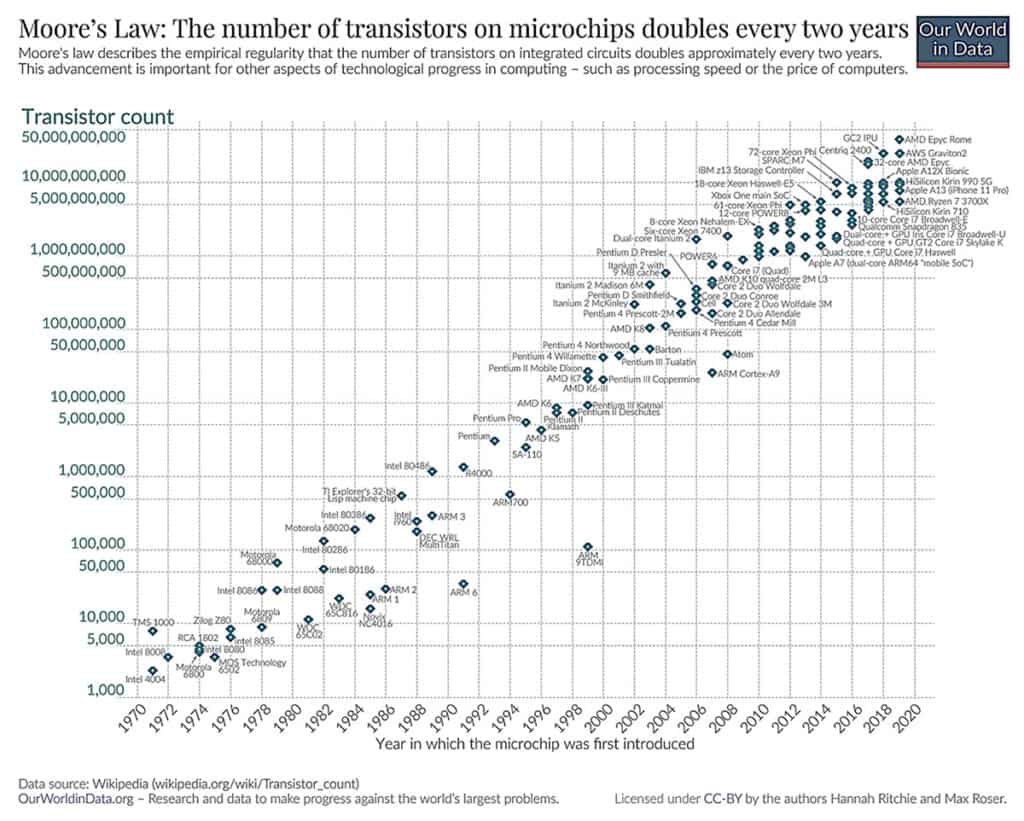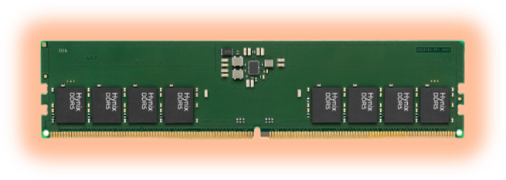A Tribute to Gordon Moore

The first transistor was invented in 1947. By 1970, Intel commercialized the world’s first DRAM chip with about 1,500 transistors – a major feat! It was fabricated using a 10,000nm process on 3in wafers. Today, top component manufacturers are preparing sub-3nm processes on 12in wafers for DDR5 SDRAM components that have more than 32 billion transistors per chip. Put another way, Intel would have had to produce about 2.2million 1K DRAM chips to give everyone in the U.S. 10 transistors. A single next-generation DRAM chip can match that this year. How did we get here? Moore’s law.
Gordon E. Moore, co-founder of Intel and the man behind Moore’s law passed away last month at the age of 94. Stating that the number of transistors on a chip doubles about every two years, Moore’s law has guided and pushed the semiconductor industry for more than five decades. For years, industry insiders have predicted that the innovation and scaling at this rate would come to an end, or at the very least slow down. The reasons for that prediction vary from the laws of physics to economic challenges. So far, the law has been more or less holding up. However, a breakdown of Moore’s law would have widespread implications, not just for the global semiconductor industry itself but for all the end users.

The semiconductor industry
Semiconductor components are at the heart of all our electronic devices. You can’t even drive a car or make a card payment without relying on many semiconductor chips. Our lives have become increasingly digital, and with that, the semiconductor market has boomed. In 2021, semiconductor sales grew by 20% to $600 billion, mainly because the pandemic boosted our digital lifestyle. Several reports predict the chip industry will be worth $1 trillion by the end of the decade. According to research, in the last twenty years, up to 40% of the worldwide growth in productivity can be ascribed to the strides in communication and information technologies, which wouldn’t have materialized without performance increase and cost decrease of the semiconductor components they rely on.
Performance up, cost down.
Moore’s law plays a central role in the semiconductor industry’s past and future growth. Adherence to it has not only pushed IC performance up for decades, but it has also continuously pushed semiconductor prices down. For example, every year for the past several decades, the per-bit pricing of DRAM has fallen by 30-35%. In 2022, the market recorded even steeper price decreases: Contract prices for 8GB DDR5 modules decreased by 43% last year. This price fall of a new technology iteration indicates that after seven years of DDR4, we are at the cusp of transitioning from DDR4 to DDR5. Yole Group predicted that in 2023 shipments of DDR5 will surpass those of DDR4 memory.
Moore for long-life applications
A halting or slowdown of Moore’s law would impact the performance, pricing, and product range of everyday electronics like smartphones and laptops significantly but also impact long-life applications. Most industrial and military applications are designed to perform reliably for extended periods of time in harsh environments and rely on mature iterations of a technology for their performance. Driven by innovation and Moore’s law, the lifetime of this equipment often surpasses the lifecycle of its chip components. Since one cannot simply replace a DDR4 memory chip with a DDR5 component without redesign, a technology transition is accompanied by end-of-life/last-time-buy challenges. At the same time, long-life applications often perform critical tasks in the medical, industrial, or military world. Breakthroughs in those fields hinge on continuously increasing performance and computing power of their embedded components. Or in other words: the continuation of Moore’s law.
SMARTsemi is your supply chain partner for DRAM components, eMMC solutions, and SD/microSD Flash Memory Cards for long-life applications. With 20+ years of industry experience, we understand your challenges and have aligned our priorities with yours to simplify your memory chip supply chain for the long run. We know what you need before you need it. Get a jump start and request a sample today.







